Have you ever wondered why your sporting gun looks and works the way it does? The ideas incorporated into the mechanisms of most of the side-by-side guns ever made began life in the minds of a few Victorian gunmakers.
As my old friend, and former Purdey finisher, David Mitchell often reflects; “They didn’t have TV’s back then and there can’t have been much to do in the evenings”.
The Devil, they say, makes work for idle hands but in the mid-1800s something was directing the minds of the men who spent their days filing metal and shaping wood in Birmingham and London, to create ever more efficient and ingenious ways of completing the various tasks a sporting gun had to perform in order to be desirable to the wealthy sportsmen of the day.
With the advent of the breech-loader in Britain in the early 1850s, which entered the arena when Lang advertised a slightly modified copy of a continental (LeFaucheux) gun exhibited at the 1851 Great Exhibition in London’s Crystal Palace, the starting line was crossed and there was a rush to improve it.
As is the case every time a new idea challenges an established principle, many sportsmen and gun-makers scoffed at the notion that a gun that hinged in the middle would ever be as safe or ‘shoot as hard’, as the saying went, as a muzzle-loader.
The first breech-loaders had a forward-facing lever under the forend. Pulled to the side, it released a simple single bolt and allowed the barrels to fall open.
Your gun doesn’t work that way. Of the many lever types and positions tried, the one that emerged victorious is the top-lever. It appears on just about every popular breech-loading break-open shotgun and double rifle made today.
The Top-Lever
What many people do not realise is that the top-lever is a very old idea and was one of the earliest innovations used by gunmakers as the means by which the bolts holding the gun shut were released from their bites.
The first top-lever patent was that of Birmingham gunmaker Westley Richards and it was taken out in 1858 (patent 2149).
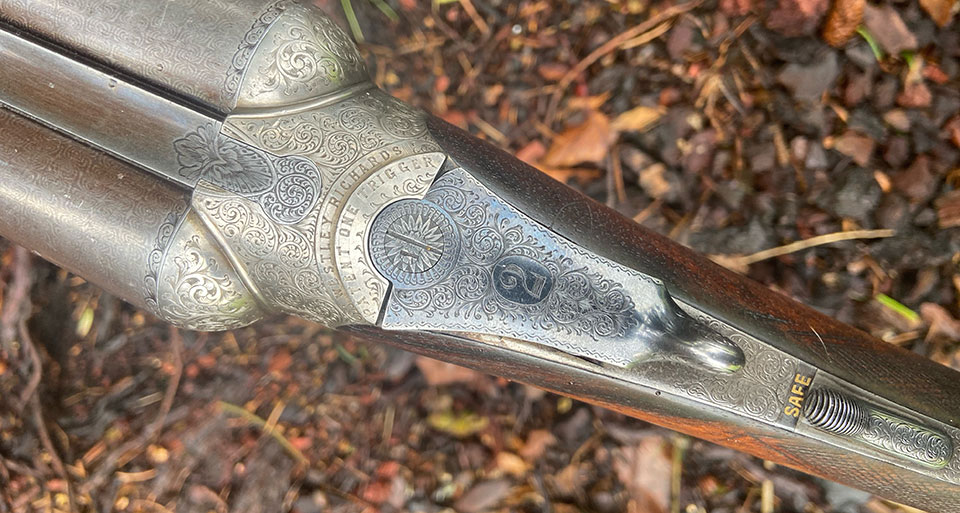
The first gun Westley Richards actually made and sold with a top-lever was a 16-bore sold to a Mr. John Amphlett in 1862. At this time Lang, who introduced the breech loader to England, was still selling LeFaucheaux type forward-facing under-levers.
The top-lever had many rivals during the following two decades but it has remained immensely popular and surpassed all others in popularity and utility.
The Purdey Bolt
The lever is the means of operation, but what it operates is another thing entirely. The bolting system is what secures the barrels to the action and prevents the gun from opening when it is required to stay shut.
Over the years there have been a great many bolting arrangements. Some rotated into position, some slid and some hooked. Some were inert, requiring the operator to move the lever in one direction to open it and move it in the the other to close it, while others were ‘snap’ actions, with springs that completed the bolting process when the gun was closed. Some had a single bite, while others hade two or more.
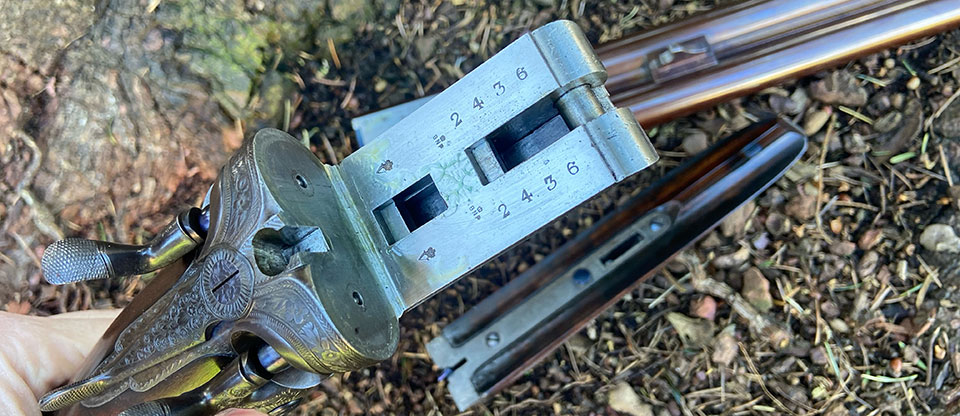
Of all these, the 1863 (patent 1104) Purdey double under-bolt quickly stood out as the ideal; providing sufficient security and strength, with good looks and ease of operation. The Purdey bolt slides within the bar of the action and locates into bites cut into the lumps to prevent the barrels hinging downwards.
The Purdey bolt has been used with several different lever types; like a Daw lever and a side-lever, but it is with a top-lever that it has been preferred in the modern age. Linking the two became possible through the 1865 patent Scott spindle (patent 2762 of 1865), which goes vertically through the action to provide the necessary camming motion to withdraw the Purdey bolt when the top-lever is turned.
The Purdey bolt has been, and still is, often teamed with another to create a ‘third bite’. There have been many of these patented over the years but for the average shotgun, gun makers have found a well made gun with a Purdey double under-bolt is all that is required.
The Barrels as Cocking Levers
When guns with internal hammers were first introduced, the hammers were cocked by the operating lever. These ‘lever cockers’ used the lever to perform two operations: first to cock the hammers (or tumblers) and then to withdraw the bolt so the gun would fall open. This required long lever travel and more pressure and this is why some early hammerless guns have long levers.
The idea to use the weight of the falling barrels as a lever by which the locks could be cocked originated with Joseph Needham (patent 1205 of 1874) and was cemented with the Anson & Deeley patent ‘boxlock’ (patent 1756 of 1875).
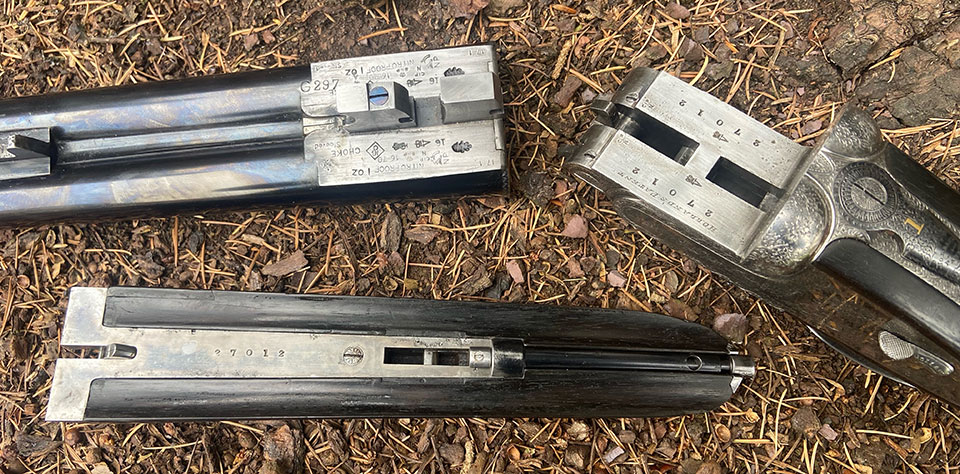
From that point on, all the forward thinking designs that were successful incorporated barrel cocking, until Beesley introduced the (much more complicated) spring-cocking patent of 1880 that Purdey still uses. The rest of the world, with a few exceptions, stuck with barrel cocking. It still does. In fact, Anson & Deeley’s boxlock continues to be made in significant numbers, little modified from the 1875 original.
We can say with confidence that the ‘boxlock’ was not only a very early hammerless gun, coming just four years after Murcott’s patent 1003 of 1871, which was the first workable hammerless breech-loader, but that the design was so good that it ended the hammer gun era, in practical terms.
The Forend Release Catch
Old muzzle-loaders had the forend secured to the barrel loop by a wedge and escutcheon. This is very secure and strong and aesthetically pleasing. However, it requires a tool, all be it a rudimentary one, to remove the wedge to take the gun apart.
Early breech-loaders followed the lead of the muzzle-loader and utilised the wedge and escutcheon. However, a method not requiring a tool, which could be quickly removed by hand was preferable and soon designs began to appear allowing exactly that.
The most successful, and now commonly used, were the 1873 (patent 1422) Deeley & Edge and the 1872 (patent 3791) Anson patents. Both patents emanated from Westley Richards, where John Deeley was Managing Director and both Anson and Edge were practical gunmakers.
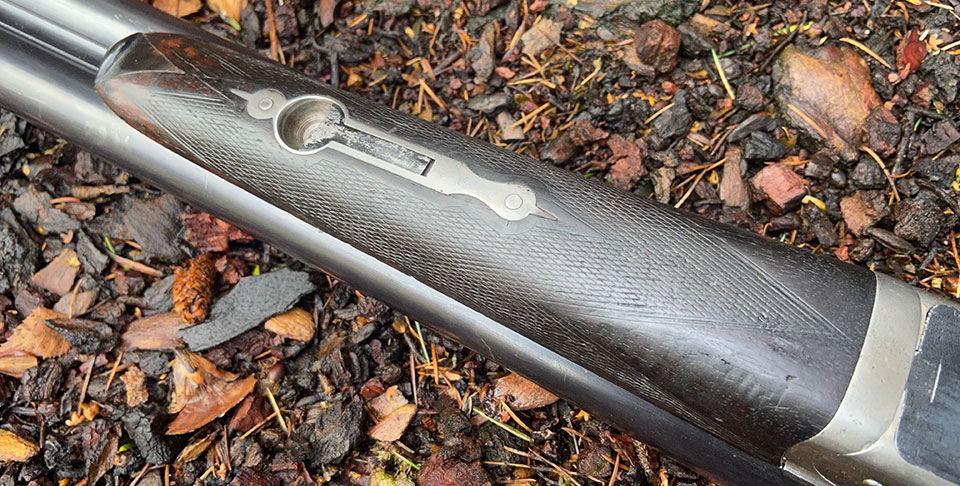
In the early years of their existence, these mechanisms were not universal. Dozens of alternative cocking methods, operating levers, forend catches and bolting systems co-existed with them for much of the mid-to-late 19th century.
This can, to greater extent, be attributed to the fourteen-year patent protection that governed their accessibility. A royalty had to be paid by any gunmaker wanting to use any of these designs. Naturally, everybody wanted to avoid paying, which resulted in a plethora of patents intended to circumvent the ones described here.
Once patent protection lapsed, the superiority of these designs left them standing proud, while most others faded into obscurity.
Take a moment to examine your shotgun. If it is a side-by-side of decent quality made in the 20th or 21st century, it will, in all probability, contain all or most of the mechanisms described above; mechanisms that gestated in the minds of England’s Victorian gunmakers, working on ideas in the evenings, when neither Netflix nor Google had a monopoly on peoples’ spare time.
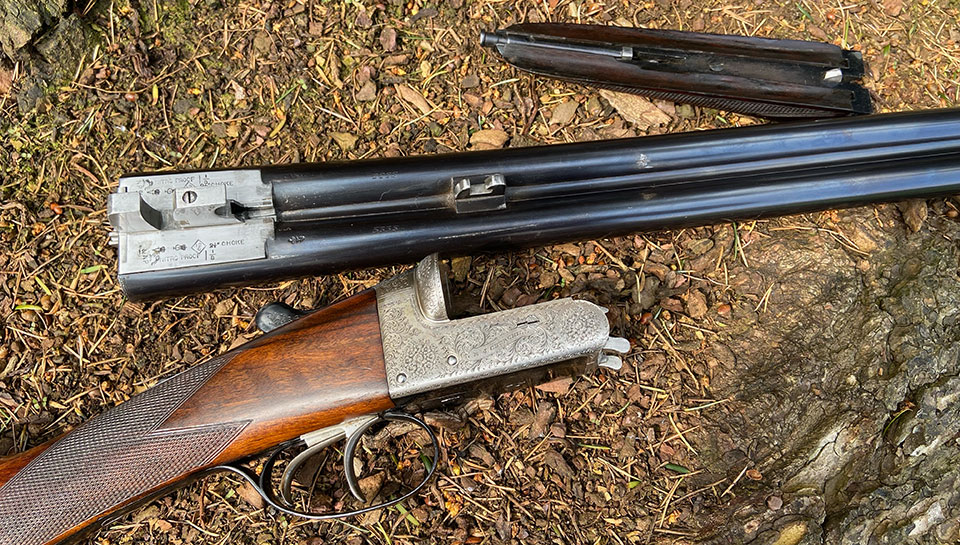
When examined carefully it is apparent how simple most of these ideas are and how obvious they seem to us now. The idea of improvement is often not what is most complicated and clever, but what is most simple and obvious. It just isn’t obvious in advance; it requires a degree of genius to show us.
Published by Vintage Guns Ltd on (modified )




